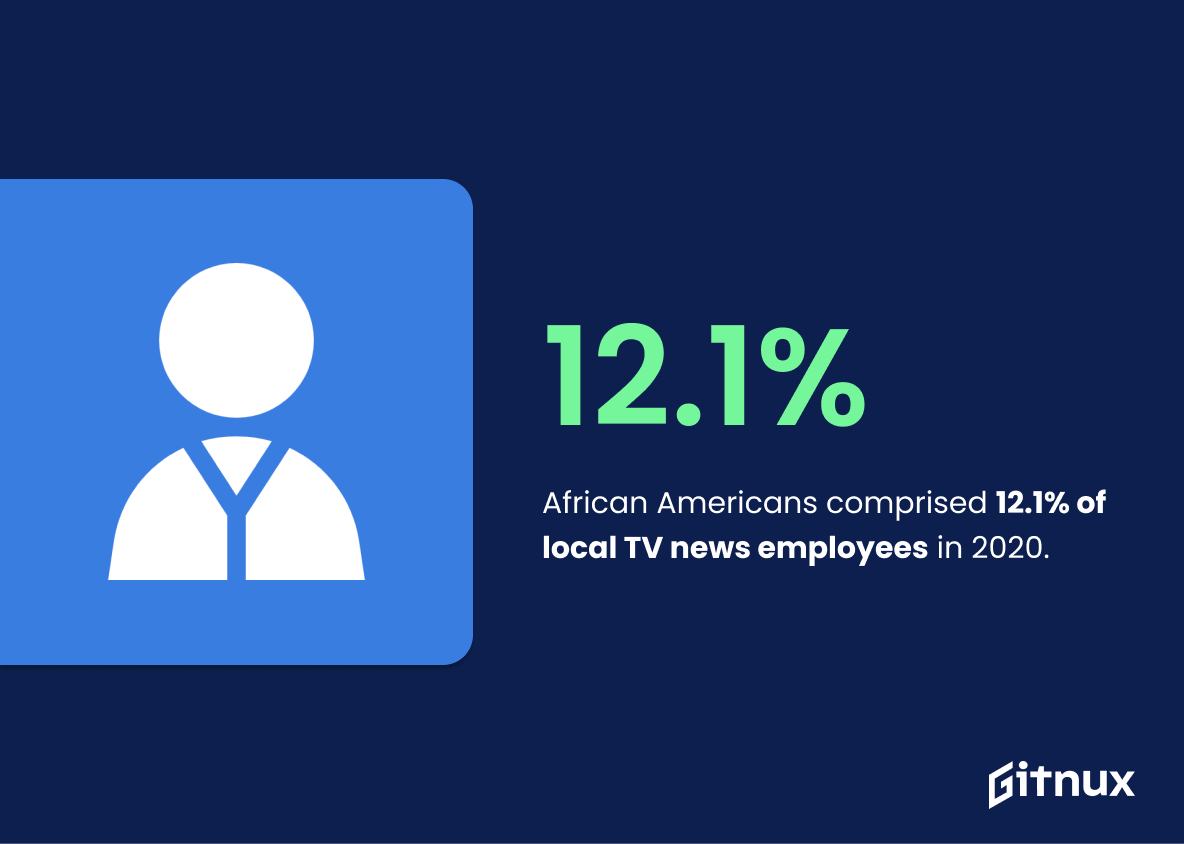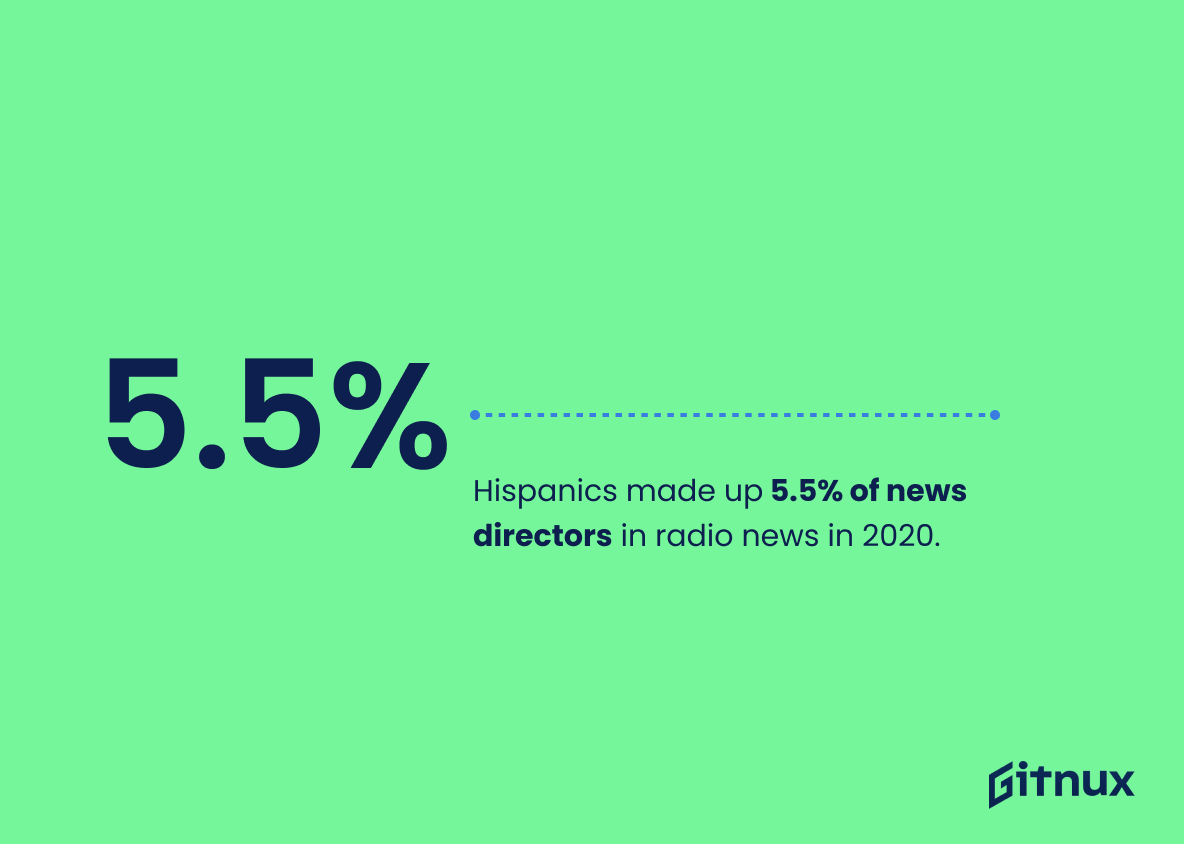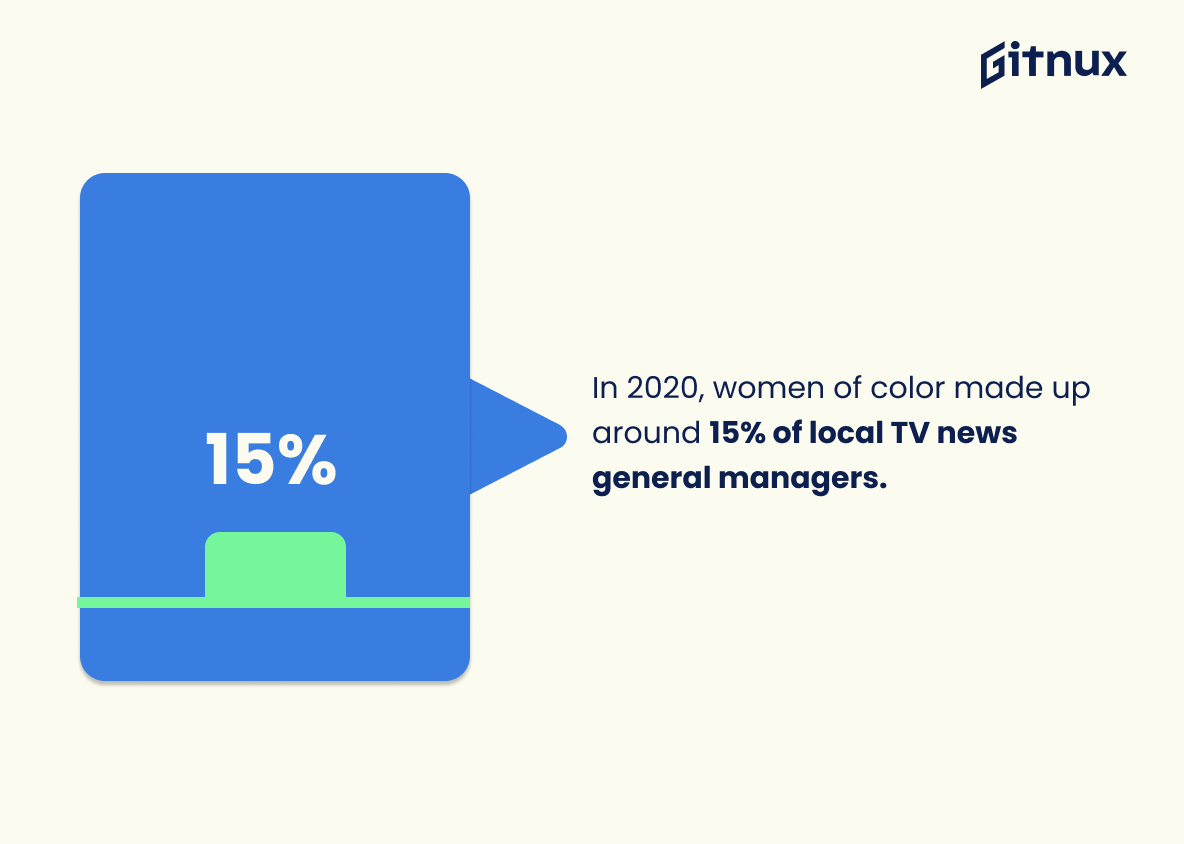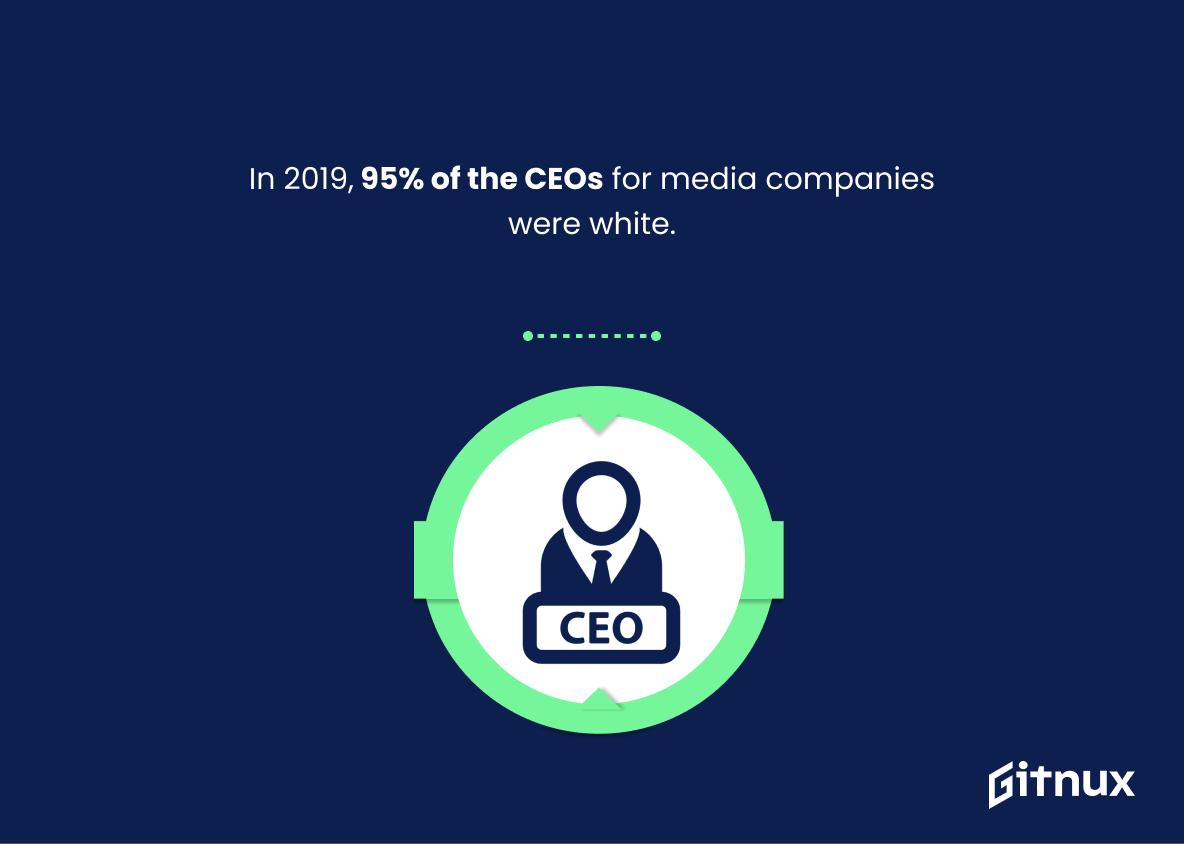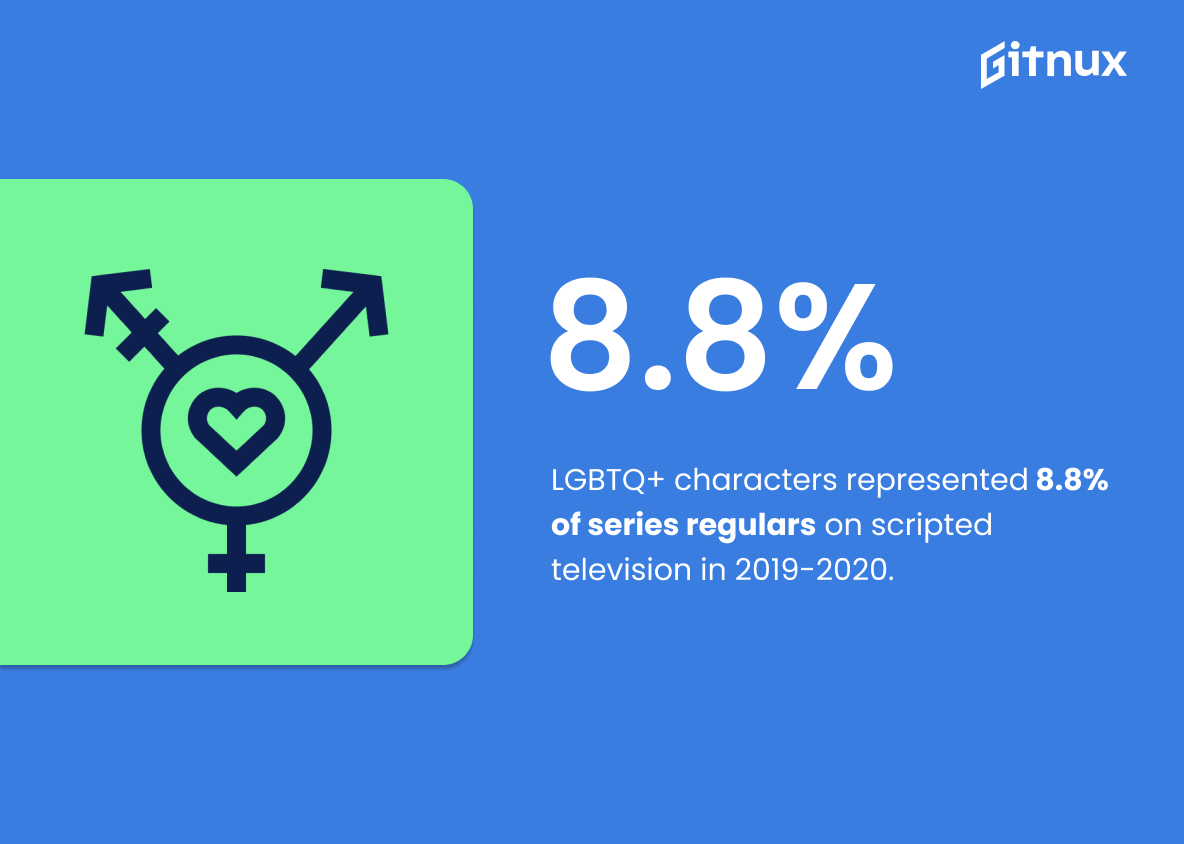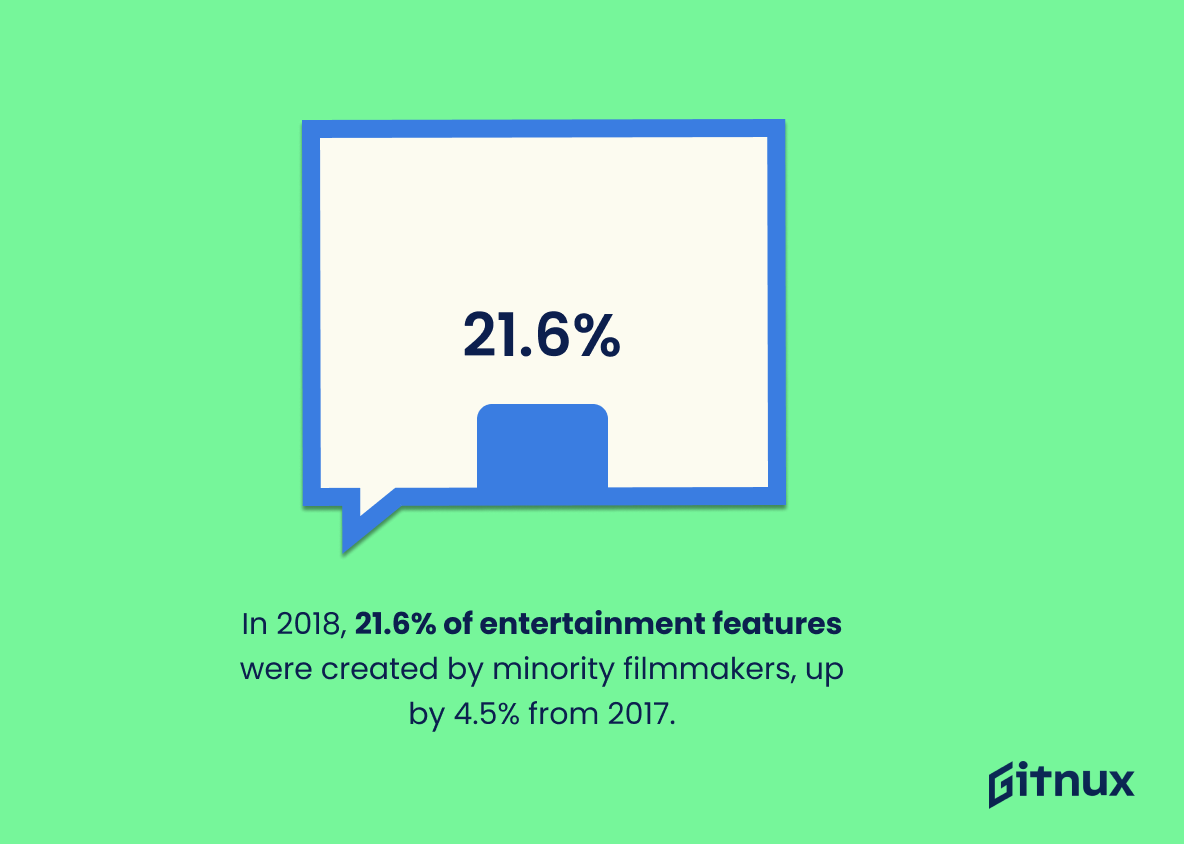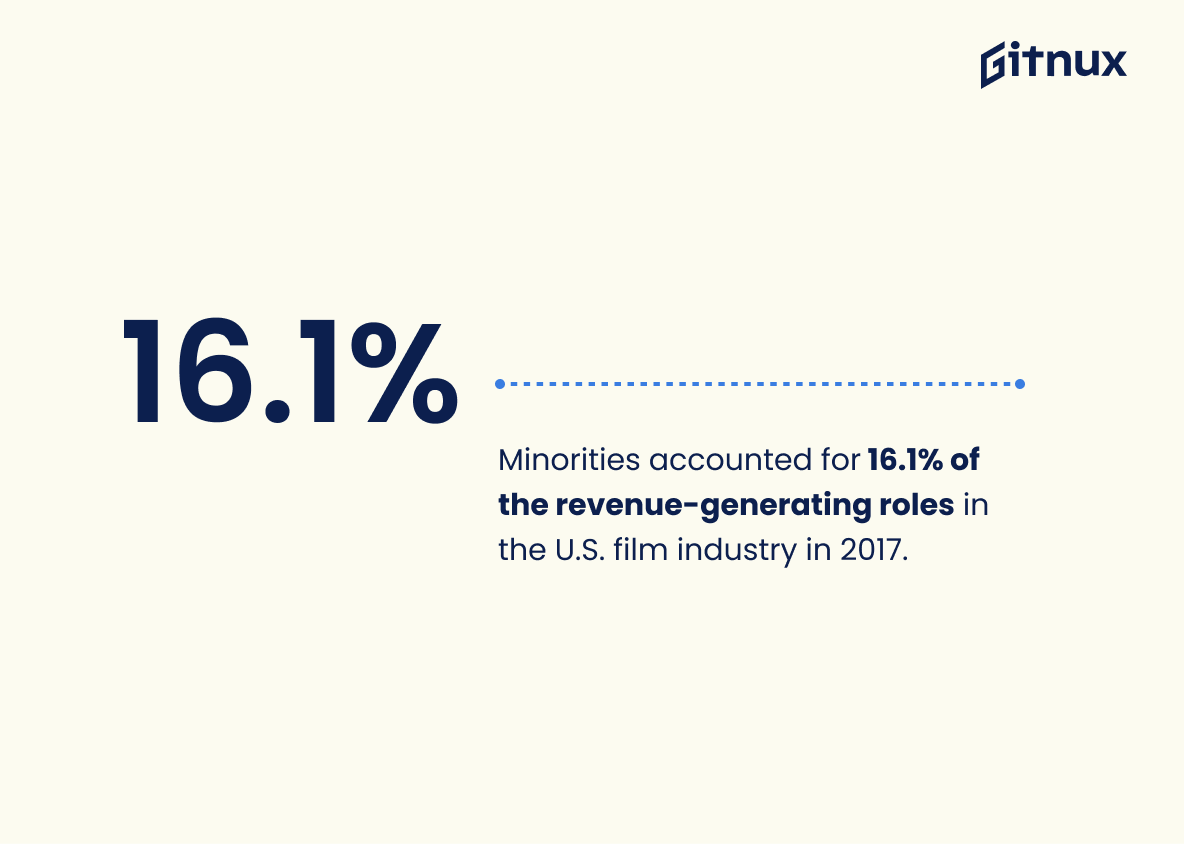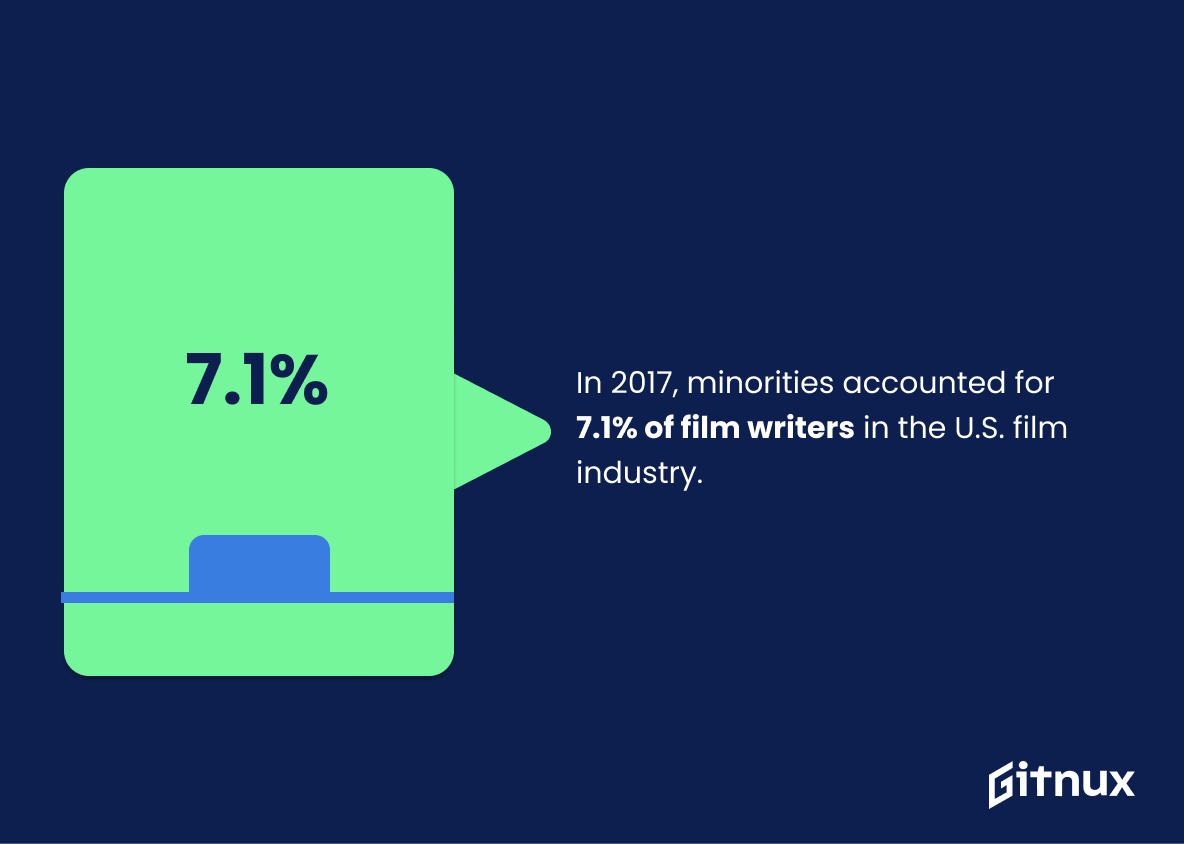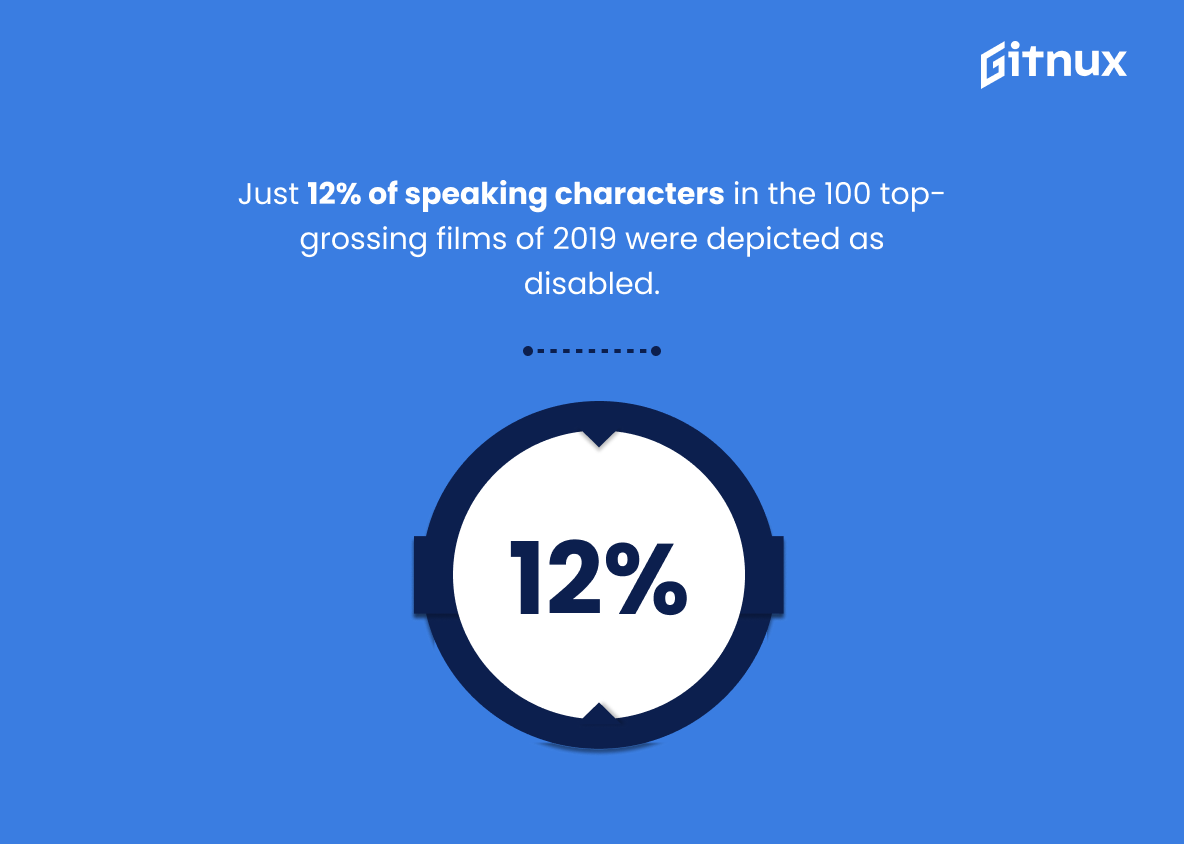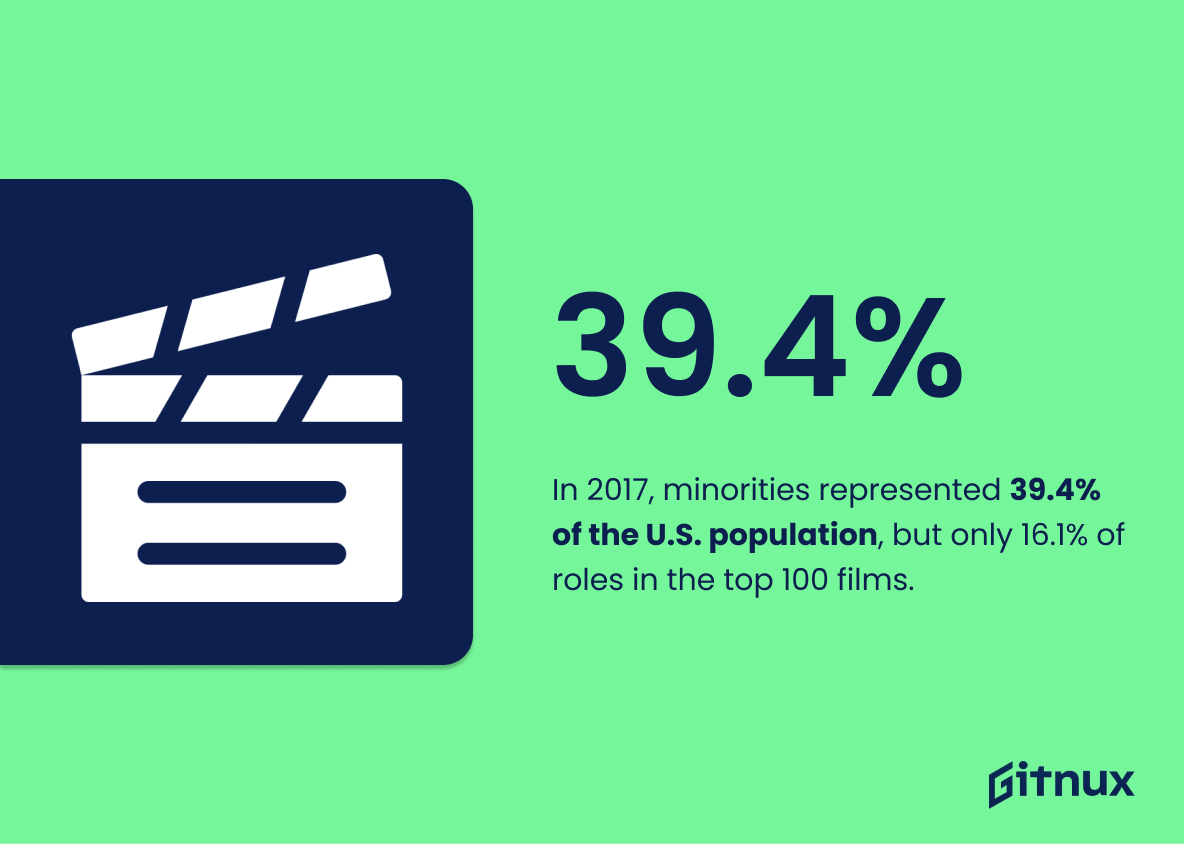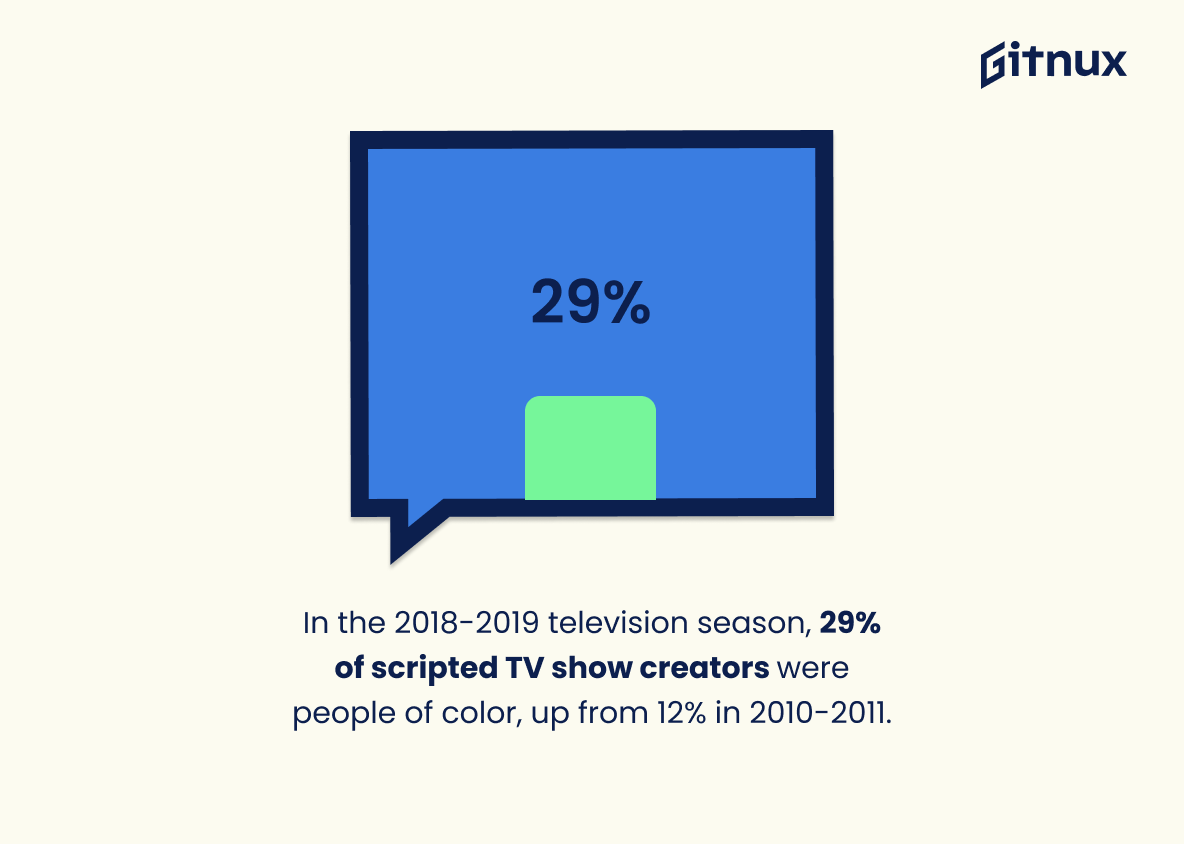The media industry has long been dominated by white people, but recent statistics show that there is a growing trend of diversity in the workplace. From newsroom employees to film directors and TV writers, minorities are slowly gaining more representation in the media. This blog post will explore some of these statistics on minority representation in the media from various sources such as Pew Research Center, GLAAD, RTDNA and USC Annenberg Inclusion Initiative. We’ll look at how many journalists are people of color; what percentage of lead roles African American women have had; how many radio news employees were people of color; what percentage of local TV news general managers were women or men or color; and much more. By examining these numbers we can gain insight into where progress is being made towards greater inclusion within the media industry – and also identify areas where further work needs to be done.
This statistic is a stark reminder of the lack of diversity in the media industry. It highlights the fact that minority groups are significantly underrepresented in the field of journalism, and that there is a need for greater representation of these groups in the media. This statistic is an important one to consider when discussing minorities in the media, as it serves as a reminder of the need for greater diversity in the industry.
In 2020, only 16.1% of radio news employees were people of color.
This statistic is a stark reminder of the lack of diversity in radio news employees. It highlights the need for more representation of people of color in the media, as they are currently underrepresented in the industry. This statistic is a call to action for media outlets to make a conscious effort to create a more inclusive and diverse workplace.
Minorities In The Media Statistics Overview
African Americans comprised 12.1% of local TV news employees in 2020.
This statistic is a powerful reminder of the progress that has been made in the media industry towards greater representation of African Americans. It shows that, while there is still a long way to go, there has been some progress in terms of increasing the number of African Americans employed in local TV news. This is an important step towards creating a more diverse and inclusive media landscape, and it is a statistic that should be celebrated.
In 2019, 27% of newsroom managers were women of color.
This statistic is a powerful reminder of the progress that has been made in the media industry towards greater diversity and inclusion. It shows that, despite the challenges that minorities face in the media, there is a growing presence of women of color in leadership roles. This statistic is a testament to the hard work and dedication of those who have worked to create a more equitable and inclusive media landscape. It is also a call to action for those who are still working to make the media industry more diverse and inclusive.
Hispanics made up 5.5% of news directors in radio news in 2020.
This statistic is a stark reminder of the lack of representation of Hispanics in radio news. It highlights the need for more diversity in the media, and serves as a call to action for media outlets to make a conscious effort to include more Hispanic voices in their newsrooms.
In 2020, women of color made up around 15% of local TV news general managers.
This statistic is a powerful reminder of the progress that has been made in the media industry towards greater representation of minorities. It shows that women of color are increasingly being given the opportunity to take on leadership roles in local TV news, which is a positive step towards creating a more diverse and inclusive media landscape.
In 2019, 95% of the CEOs for media companies were white.
This statistic is a stark reminder of the lack of diversity in the media industry, particularly at the highest levels. It highlights the need for more representation of minorities in the media, and the need for more opportunities for minorities to rise to the top. It is a call to action for media companies to make a conscious effort to create a more inclusive and equitable workplace.
LGBTQ+ characters represented 8.8% of series regulars on scripted television in 2019-2020.
This statistic is a powerful reminder of the progress that has been made in recent years in terms of representation of LGBTQ+ characters in the media. It shows that there is a growing acceptance of LGBTQ+ characters in mainstream television, which is a positive step forward in terms of creating a more inclusive media landscape. This statistic is also a reminder that there is still a long way to go in terms of representation of minorities in the media, and that there is still a need for more diverse and inclusive stories to be told.
In 2018, 21.6% of entertainment features were written or directed by minority filmmakers, a 4.5% increase from 2017.
This statistic is a testament to the progress being made in the representation of minorities in the media. It shows that the efforts to create a more inclusive media landscape are having a positive effect, with a 4.5% increase in the number of entertainment features written or directed by minority filmmakers in 2018. This is an encouraging sign that the industry is taking steps to ensure that minority voices are heard.
Minorities accounted for 16.1% of the revenue-generating roles in the U.S. film industry in 2017.
This statistic is a powerful indicator of the progress that has been made in the U.S. film industry in terms of representation of minorities. It shows that minorities are increasingly being given the opportunity to take on revenue-generating roles, which is a positive step towards greater diversity and inclusion in the media. This statistic is an important reminder that there is still work to be done in order to ensure that minorities are given equal opportunities in the media.
In 2017, minorities accounted for 7.1% of film writers in the U.S. film industry.
This statistic is a stark reminder of the lack of representation of minorities in the U.S. film industry. It highlights the need for more diversity in the industry, and the importance of creating opportunities for minority writers to have their voices heard. This statistic is a call to action for the film industry to make a conscious effort to create a more inclusive environment for minority writers.
Just 12% of speaking characters in the 100 top-grossing films of 2019 were depicted as disabled.
This statistic is a stark reminder of the lack of representation of disabled people in the media. It highlights the need for more diverse representation in films, as it shows that disabled people are not being given the same opportunities as their non-disabled counterparts. This lack of representation can have a negative impact on how disabled people are perceived in society, and can lead to further marginalization and discrimination. It is essential that disabled people are given the same opportunities as everyone else, and that their stories are told in the media.
In 2017, minorities represented 39.4% of the U.S. population, but only 16.1% of roles in the top 100 films.
This statistic is a stark reminder of the lack of representation of minorities in the media. It highlights the fact that despite making up almost 40% of the population, minorities are still vastly underrepresented in the top 100 films. This is a concerning issue that needs to be addressed in order to ensure that all members of society are accurately and fairly represented in the media.
In the 2018-2019 television season, 29% of scripted TV show creators were people of color, up from 12% in 2010-2011.
This statistic is a powerful indicator of the progress that has been made in the representation of minorities in the media. It shows that, over the past decade, there has been a significant increase in the number of people of color creating scripted television shows. This is an important step towards greater diversity and inclusion in the media, and it is a sign that the industry is beginning to recognize the value of diverse perspectives.
Conclusion
The statistics presented in this blog post demonstrate the lack of diversity and representation of minorities in media. Despite some progress, there is still a long way to go before minority groups are represented equitably across all forms of media. It is clear that more needs to be done by industry leaders and policymakers alike to ensure that everyone has an equal opportunity for success within the media landscape.
References
0. – https://www.freepress.net
1. – https://www.hollywoodreporter.com
2. – https://www.rtdna.org
3. – https://www.variety.com
4. – https://www.nap.edu
5. – https://www.pewresearch.org
6. – https://www.glaad.org
7. – https://www.ucla.edu
